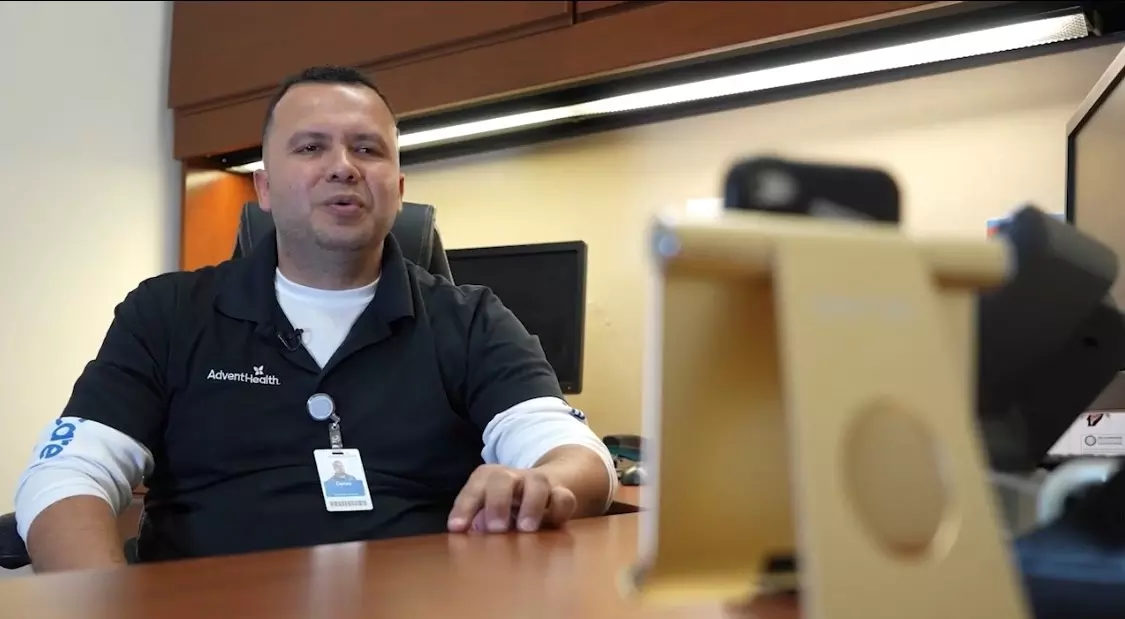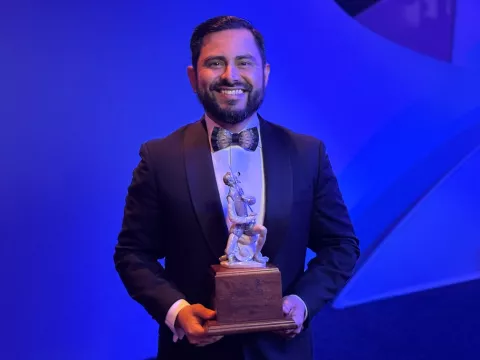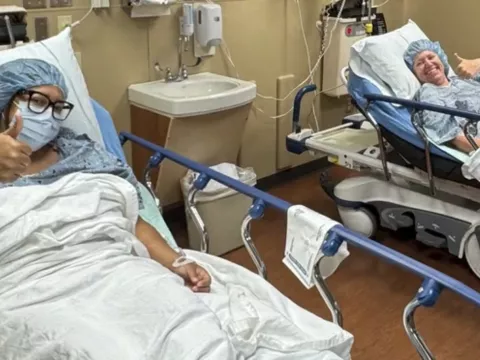- Jose Luis Dieppa
Choose the health content that’s right for you, and get it delivered right in your inbox.
ORLANDO, Fla. – At just 35 years old, Carlos Paredes got a stunning diagnosis: he had Parkinson’s disease.
“I did not want to believe that I had Parkinson’s at my age,” he said. “At that time, I was about to get married, and I was ready to start a family. So, it was hard for me.”
Paredes initially noticed tremors in one of his fingers. Over the years the uncontrollable movements spread to all his fingers, and eventually to both arms. The tremors were so severe that he struggled with simple tasks such as drinking from a cup, writing and brushing his teeth.
“My movements increased to the point I could not hold a plate for dinner, I could not play with my daughter, or shave,” he said.
His family advised him to see a neurologist, who diagnosed him with Parkinson’s disease – a progressive condition that causes tremors, slowness and balance issues. After years of taking up to 16 pills daily without much improvement, his mother suggested he see an expert in brain surgery.

In consultation with his medical team, which included neurosurgeon Dr. Chandan Reddy at AdventHealth Celebration and Dr. Mitesh Lotia, movement disorder neurologist and medical director of the movement disorder program at AdventHealth, it was determined that Carlos was an ideal candidate for deep brain stimulation surgery.
“Deep brain stimulation is a procedure where we insert two small wires into either side of the brain. They stimulate a very specific area of the brain to help treat tremors and other symptoms of Parkinson’s disease,” said Dr. Lotia.
By implanting electrodes, doctors can stimulate the specific areas of the brain associated with the unique condition of the patient through electrical impulses that regulate signals, cells and chemicals. A pacemaker-like device is implanted under the skin of the patient’s chest that controls the amount of stimulation the patient receives, and a wire connects the device to the electrodes in the brain. After surgery, visits are frequent in the first several months for therapy management, and require in-person visits to ensure the device is working properly and to modify settings when needed.
But thanks to innovative new technology, the adjustments can now be done remotely through the NeuroSphere Virtual Clinic. The process is simple: using a tablet, Dr. Lotia can observe Paredes’ symptoms and change the stimulation in his brain during a telehealth visit, which can be done from anywhere, such as the patient’s home or workplace. The results can be seen immediately.
“Doing this virtually pretty much serves the same purpose of doing it in clinic,” said Dr. Lotia. “We can provide the same and effective care in the comfort of their home or as in Carlos’ case, their work.”
Deep brain stimulation surgery can improve the quality of life of the patient, including returning to hobbies, sports, and other activities. It can also help the patient manage their symptoms as the disease changes or progresses.
For Paredes, the procedure permitted him to return to the things he loves including his job.
“My life has improved 90% because I do not have the movements anymore. I can play with my daughter, I can do my job normally, I can have a life with my family,” he said.
According to Dr. Lotia, about 15% of patients with Parkinson’s disease in the United States become good candidates for deep brain stimulation surgery. However, it is still very underutilized service due to many factors such as lack of awareness, delayed referrals and fear of brain surgery.
“I was very scared of the procedure, but I did it for family,” Paredes said. “I hope that people who may have the same condition see my story and get the help they need. If I can help one person, it was all worth it.”
Paredes’ story appeared on “AdventHealth TV,” AdventHealth’s internal newscast for Central Florida Division team members. Watch here: Deep Brain Stimulation - AdventHealth TV Story
Recent News
The Inspiring Wholeness podcast explains how to start an exercise routine, stay motivated and build endurance safely, to find your inner Ironman.
As the world rang in 2025, AdventHealth for Women welcomed the very first babies of the new year.
Dr. Joseph Lopez, chief of pediatric head and neck surgery at AdventHealth for Children, was honored with the prestigious Professional of the Year Award at the 27th Annual Don Quijote Awards.
Giving back to his hometown, Dr. Ryan Day brings advanced robotic surgery to local patients, offering life-saving care close to home.
The holiday season can increase heart attack risks due to overindulgence, stress, and ignored symptoms, but Dr. Hector Lozano advises moderation, staying active, managing stress, and sticking to...
Transplant is AdventHealth Transplant Institute’s 5000th kidney transplant
Deputies from local fire and police departments dressed as elves and dropped in to visit patients as part of an eight-year long tradition bringing festive cheer to kids and families staying at the...
AdventHealth is now using a fluorescent dye that lights up cancer cells during surgery, which is providing faster, more accurate treatment for patients.
The Ahn family’s life was turned upside down when their 5-year-old daughter suddenly started having 30 seizures a day. She had FIRES Syndrome, a one-in-a-million and potentially fatal diagnosis.
On the newest Inspiring Wholeness podcast, Obie Diaz, local morning radio show host, shares how a routine physical eventually led to two open heart surgeries.
Inspired to change statistics around Black maternal deaths, AdventHealth for Women's Fourth Trimester Program offers enhanced postpartum care for Black mothers with high blood pressure.
AdventHealth University and Jobs Partnership Build Health Care Workforce Pipeline from Underserved Communities.












